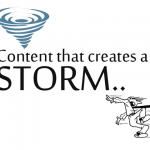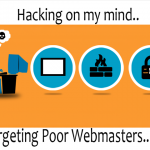Modernizing Legacy Systems: Strategies for Enterprise Software Development
Businesses are constantly under pressure to innovate and maintain their competitiveness in the ever changing technology landscape of today. Managing legacy systems is a significant obstacle that many firms must overcome. These antiquated, yet frequently essential, systems
can impede security, scalability, and agility. It is not only technically necessary but also strategically vital to modernize legacy systems. We will examine important tactics for updating old systems in corporate software development in this blog post.
can impede security, scalability, and agility. It is not only technically necessary but also strategically vital to modernize legacy systems. We will examine important tactics for updating old systems in corporate software development in this blog post.
Recognizing the Need for Modernization
Even though they were dependable in their prime, legacy systems can eventually become bottlenecks. They frequently employ antiquated software languages, run on outdated hardware, and are unable to integrate with contemporary apps. Keeping these systems up to date has the following effects:
- High Maintenance Costs: Maintaining legacy systems frequently calls for specific knowledge and resources, which raises operating expenses.
- Security Risks: Due to a lack of patches and updates, outdated systems are more susceptible to cyberattacks.
- Limited Scalability: The size and complexity of contemporary commercial processes are beyond the capabilities of these technologies.
- Lack of adaptability: An organization's capacity to react swiftly to shifts in the market and client needs may be hampered by legacy systems.
Although modernization of a legacy system can be quite a challenging task, with the right planning and implementation, the change results in higher ROI and improvement in overall output. Here are a few strategies that you could use, however, you would also require a seasoned implementation partner to get the job done for you in the right manner and in the shortest time.
Revamp and Elevate Your Enterprise: Modernize Legacy Systems with Cutting-Edge Strategies Today!
Strategy 1: Evaluation and Scheduling
A comprehensive evaluation of the current systems must be carried out prior to starting any modernization process. This includes:
- Inventory analysis: List all of the legacy systems and record their dependencies, features, and performance indicators as of right now.
- Interviewing Stakeholders: Talk to stakeholders to learn about their concerns and what they hope to get out of the modernization project.
- Interviewing Stakeholders: Talk to stakeholders to learn about their concerns and what they hope to get out of the modernization project.
Create a thorough modernization plan with budget estimates, schedules, and resource allocation based on the assessment.
Strategy 2: Gradual Modernization
Legacy system modernization doesn't have to be a binary decision. Organizations can update their systems gradually via incremental modernization, which lowers risks and minimizes interruptions. Important strategies consist of:
- API Integration: Create APIs to let contemporary apps and legacy systems interact. This increases the functionality of legacy systems and prolongs their lifespan.
Divide large, monolithic legacy applications into more manageable, standalone microservices using the microservices architecture. This makes it easy to update and maintain and improves scalability.
- Containerization: Package old apps using container technologies like Docker to make them portable and simpler to deploy in various contexts.
Strategy 3: Replatforming and Rehosting
Two popular methods for updating legacy systems are replatforming and rehosting, sometimes referred to as "lift and shift":
- Rehosting: Transfer old apps to contemporary cloud servers without changing their source code. Immediate advantages including increased performance, scalability, and lower hardware costs result from this.
- Replatforming: Make changes to the legacy apps so they can benefit from cloud-native capabilities like serverless computing, managed databases, and automated scaling. Although it takes more work than rehosting, this strategy has more long-term advantages.
Strategy 5: Management and Migration of Data
Data migration to new platforms is a common step in modernizing legacy systems. Among the successful data migration techniques are:
- Data Mapping: Ensure data consistency and integrity by creating a thorough map of the data transfer process from the legacy system to the new platform.
- Data cleaning: To enhance the quality and applicability of the moved data, eliminate redundant or outdated information.
- Data Governance: To guarantee data security, compliance, and appropriate management during the migration process, put strong data governance procedures into place.
Strategy 6: Training and Change Management
Organizational as well as technical improvements are necessary for modernization to be successful. It is essential to put into practice an efficient change management strategy:
- Engagement of Stakeholders: Throughout the modernization process, keep all stakeholders informed and active.
- Training Programs: To assist staff in adjusting to the new procedures and systems, offer them thorough training.
Encourage feedback and make incremental improvements to the updated systems in order to cultivate a culture of continuous development.
Modernization of Legacy Systems Is Not “A One Size Fits All” Business
For businesses hoping to prosper in the digital era, modernizing legacy systems is a difficult but necessary task. Organizations may overcome the difficulties presented by legacy systems and open up new avenues for innovation and expansion by using a strategic strategy that incorporates evaluation, incremental updates, rehosting, code refactoring, data migration, and change management.
Keep in mind that there is no one-size-fits-all approach to modernization. Every business needs to modify its strategy according to its own objectives, resources, and needs. A more flexible, secure, and competitive business can result from the transformation of old systems with proper strategy and implementation.










